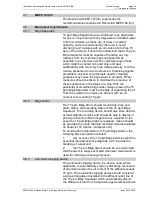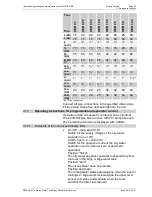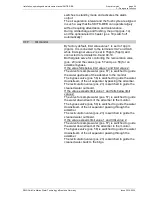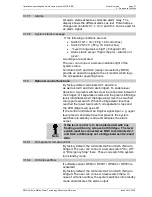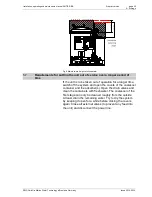
Installation, operating and maintenance manual SKIT/S-DEB
3rd print version
page 20
3 – Design and function
RWO GmbH
●
Marine Water Technology
●
Bremen
●
Germany
Issue 2014-04-10
to the ship's bilges or bilge tank when the oil content of the
effluent exceeds 15 ppm.
The accuracy of the 15 ppm Bilge Alarms should be
checked at IOPP (International Oil Pollution Prevention)
Certificate renewal surveys according to the
manufacturers instructions. Alternatively the unit
(measuring block) may be replaced by a calibrated 15
ppm Bilge Alarm. The calibration certificate for the 15 ppm
Bilge Alarm, certifying date of last calibration check,
should be retained onboard for inspection purposes. The
accuracy checks can only be done by the manufacturer or
persons authorized by the manufacturer.
3.9
Installation requirements
Fig. 3 Automatic stop device
For future inspection purposes on board ship, a sampling
point should be provided in a vertical section of the water
effluent piping as close as is practicable to the 15 ppm
Bilge Separator outlet. Re-circulating facilities (manual 3
way valve) should be provided, after and adjacent to the
overboard outlet of the stopping device to enable the 15
ppm Bilge Separator system, including the 15 ppm Bilge
Alarm and the automatic stopping device, to be tested with
the overboard discharge closed (see
à
Fig. 3 Automatic
stop device).
The re-circulating facility should be so configured as to
prevent under all operating conditions any by-ass of the
oily-water-separator. 15 ppm Bilge Separator should be
based in a non-hazardous area.
3.10
Instructions
A vessel fitted with a 15 ppm Bilge Separator should, at all
times, have onboard a copy of the Operating and
Maintenance manuals.
All routine and repair maintenance to be recorded, see
“Routine and repair maintenance record” Tabelle in
“Operation and maintenance instruction”.
15 ppm
Bilge alarm
Automatic
stop
device
to the bilge
to the bilge
Outboards
Recirculation device for
Test and port control authorities
Oil
separator














